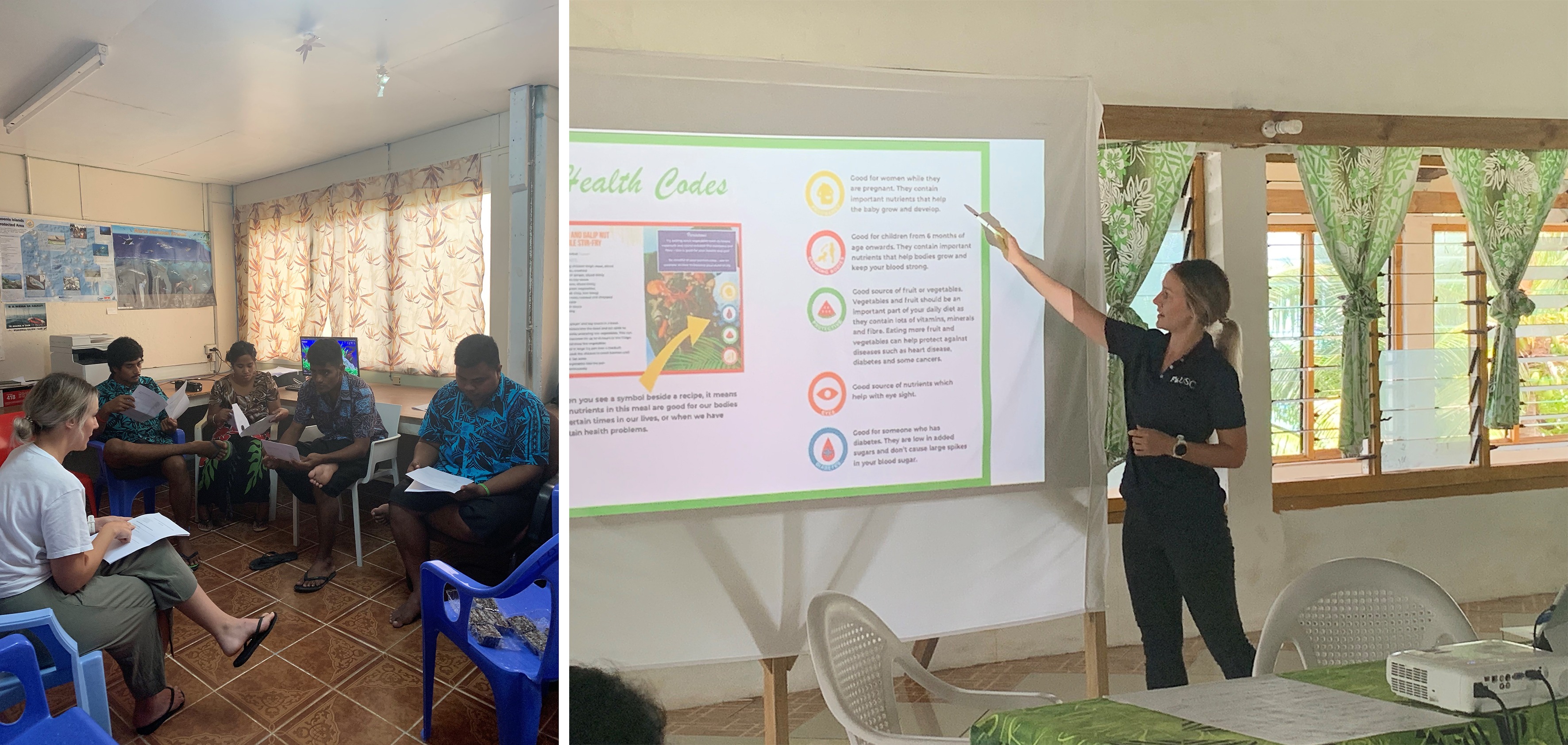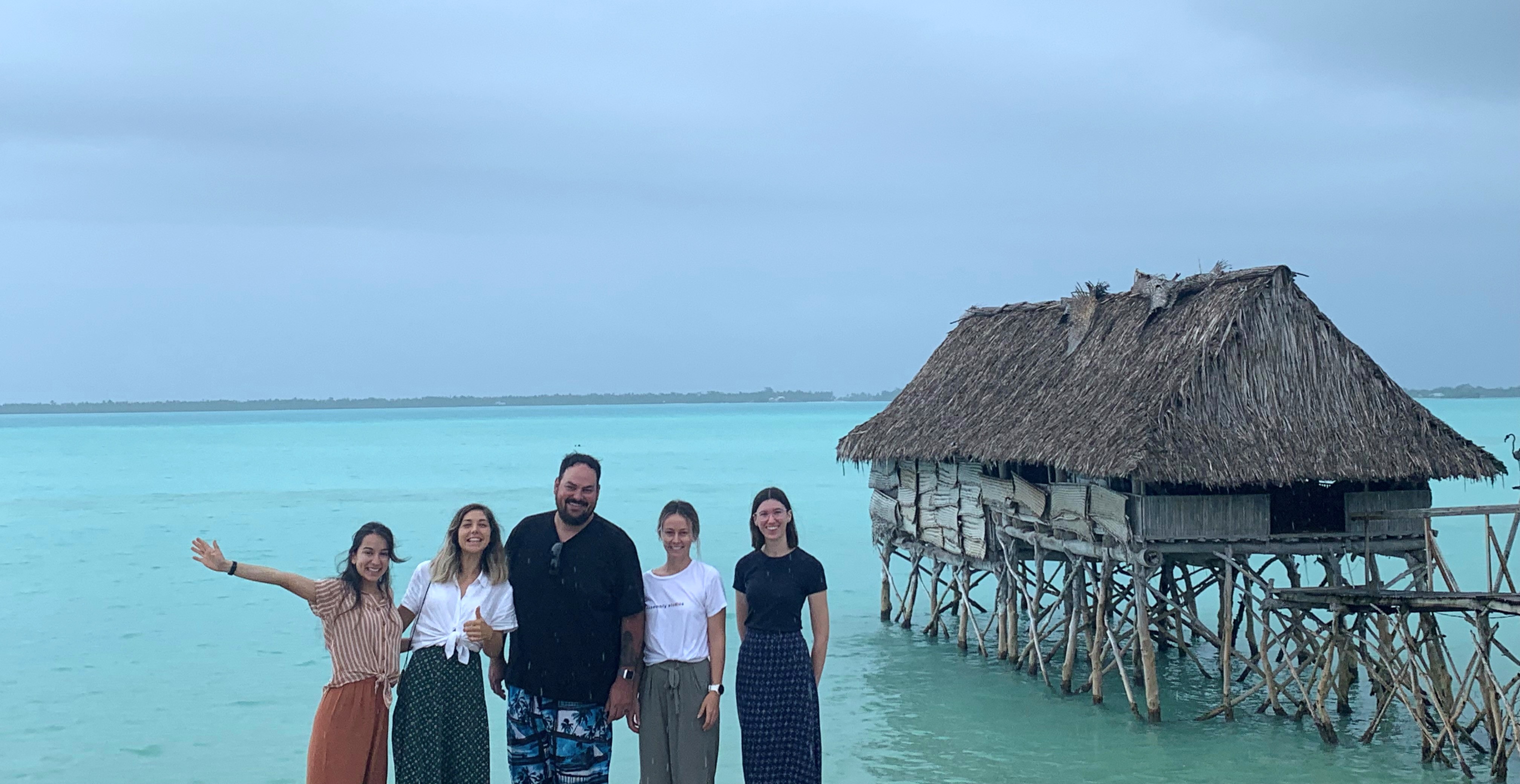

Understanding the role of seaweed in Samoa and Kiribati to boost future intake
December 10, 2019
As part of our efforts to support and encourage young Australians in study, careers and volunteering in international agricultural research, the Crawford Fund State Committees proudly support our Student Awards.
Throughout the past year, we have enjoyed sharing the journey of our 2018 recipients of these Awards as they travelled to their host countries to research and explore their chosen topic areas and gain international agricultural research experience and expertise. We have almost heard from all of our 2018 recipients, and their experiences have been diverse and overwhelmingly positive. You can read more here, where we have featured the experiences of:
- Christian Berger from the University of Western Australia
- Thomas Noble from the Queensland University of Technology
- Luisa Olmo, Lucinda Dunn, and Marisa Mitchell from the University of Sydney
- Rachael Wood and Brooke Kaveney from Charles Sturt University
- Kimberly Pellosis and Ziyang Loh from the University of Melbourne
- Jessica Fearnley from the University of New England
- Jacinta Watkins from the Australian National University
- Tamaya Peressini and Daniel Cruz from the University of Queensland
- Mathu Indren from the University of Adelaide
- Samantha Nowland and Chieu Hoang Dinh from the University of Sunshine Coast
- Ruby Grantham and Jacqueline Lau from James Cook University
- Sonal Channale from the University of Southern Queensland
- Melinda Sward from the University of Tasmania
Thanks to The Crawford Fund Queensland Committee, we share with you this summary of University of the Sunshine Coast student Hayley Butcher’s journey to Pacific Island countries as part of ACIAR research to stimulate economic development in local communities, while increasing sustainable food supplies through agribusiness development.
Hayley is a Bachelor of Dietetics (Hons) student who travelled to Samoa and Kiribati to look at the availability and consumption patterns of Caulerpa racemosa, a green seaweed, and provide insight into motivational factors for increased consumption.
Pacific Island countries, including Samoa and Kiribati, are currently experiencing a high incidence of diet related non-communicable diseases (NCD) which have coincided with a shift in diet from traditional, local food-based diets to a dietary pattern characterised by high fat, high sugar, imported foods.

As part of efforts to address NCDs, ACIAR have funded research which identified Caulerpa racemosa, a green seaweed from the genus Caulerpa, for its ability to be readily domesticated.
“Caulerpa grows natively in both Samoa and Kiribati, and could provide a culturally appropriate, nutritionally dense food source in these countries, and it has the potential to be exported, highlighting a potential for economic growth,” said Hayley.
Currently, no literature exists in relation to the consumption behaviours of Caulerpa in any of the Pacific Islands. Hayley’s study aimed to fill this gap, by quantifying consumption status and frequency, as well as identifying any potential associations between demographic factors and consumption and key motivators for consumption.
“The data collection took place in Apia, Samoa (n=79) and South Tarawa, Kiribati (n=66), and the results revealed that Samoan participants were significantly more likely to consume Caulerpa and consume it more frequently than those surveyed in Kiribati.”
Other results included:
- No associations between age or gender and consumption were found.
- Taste and culture were primary motivators to consume Caulerpa amongst Samoan participants only. Importantly, the cultural significance of Caulerpa in Samoa may be upregulating its consumption (both consumption status and frequency).
- Ease of access is a motivator in Kiribati only, which may be due to the limited availability to fresh produce in the country.
- Both countries were motivated by health and price, with price particularly important as both countries identify as low-middle income countries.
- Taste as a greater motivator amongst the Samoan participants was attributed to their greater degree of food security, where food is consumed in the interest satiety but also enjoyment.
- The findings of this study are underpinned by the degree of food security and differences in culture in Samoa and Kiribati.
Future public health efforts will need to work within the existing social parameters in each respective country.
“This study provided baseline data, which provides further foundations which can be built upon by Queensland researchers at the University of the Sunshine Coast (USC). In addition, this project established a link between the Science Department and the Nutrition Department at USC, where further research opportunities have arisen in the space of nutrition in the Pacific Islands in relation to a variety of seaweeds,” said Hayley.

“I would like to express a special thanks to those who assisted with this project. First and foremost, to Dr Libby Swanepoel, Dr Sarah Burkhart and Assoc Prof Nicholas Paul for their contributions to all stages of the project. In addition, Sapeti Tiiti, Taati, Kiribanang and Joseph Martin for their extensive support while in-country, as without them the data collection would not have been possible.
“I would also like to thank the funding bodies who made this project possible, including ACIAR, The Crawford Fund and the University of the Sunshine Coast,” she concluded.




